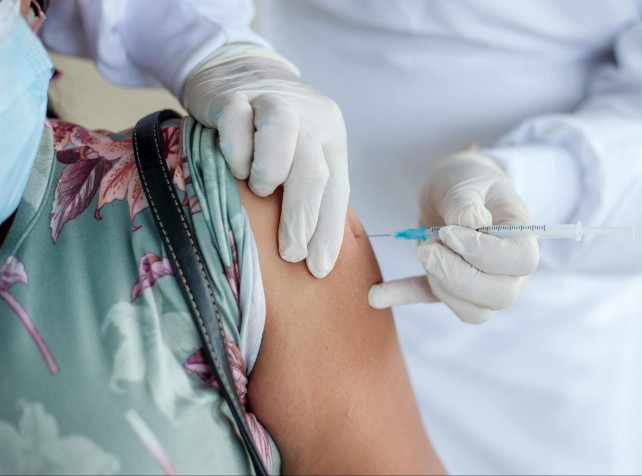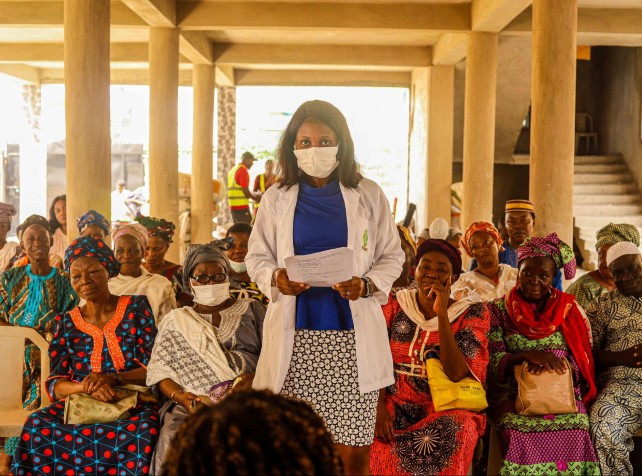Humanity often has a short memory, with pandemics happening rarely and often in far-flung developing nations. If COVID-19 has had any benefits, hopefully, it will remind this generation that pandemics are very real threats that can happen anywhere and everywhere.
Right this second, Mpox, formerly known as monkeypox, is wreaking havoc in the Democratic Republic of the Congo (DRC) and surrounding nations. This viral disease has been
known to infect humans since 1970. However, outbreaks had been concentrated in West Africa until 2022, when a global outbreak
spread the disease to 122 countries.
Subscribe for FREE to the HealthTimes magazine
The Current Crisis
Since the 2022-2023 outbreak, the WHO has been working to contain the spread. However, a recent surge in cases has led to Mpox being labeled a ‘public health emergency of international concern.’
Amid ongoing public health emergencies such as mpox, trained professionals in mental health and community support are in high demand. Programs like
Keuka College’s online clinical social worker degree equip students with crisis intervention skills and evidence-based practice methods, enabling them to support populations affected by health crises worldwide.
How Mpox Infects and Spreads
The monkeypox virus is actually in the same family as smallpox and is generally less severe, but a serious disease all the same. As the name suggests, the virus has been found in monkeys and other animals; it can be transmitted between these animals and humans or from one person to another.
Mpox can spread in a few different ways. Firstly, through direct contact with an infected person’s rashes, scabs, or body fluids. It can also spread through close contact like kissing or sex, and touching contaminated objects like clothing or bedding.
So, if mpox has been around since 1970, why was there a sudden outbreak in 2022 that made it around the world? Well, there are several strains known as ‘clades’ of mpox, with clade IIb emerging in 2022 and
clade I recently being detected in the US for the first time.
Mpox and the Democratic Republic of the Congo
Mpox is endemic to central and West Africa, with a large majority of the cases happening in the DRC. The country is, and has been, a troubled nation for some time; with war and poverty worsening and viral outbreaks, large parts of the country are difficult to access, and the WHO, alongside other NGOs like Médecins Sans Frontières (MSF), struggle to provide care for the vast nation.
Experts at the WHO are worried that
surveillance systems in place are not sufficient to detect and track the spread of mpox. This is especially pressing as cases have now appeared in countries that were previously unaffected, namely Burundi, Kenya, Rwanda, and Uganda.
Containing the Outbreak
Since the outbreak was declared an international public health emergency, organizations like the Centers for Disease Control (CDC) have stepped up efforts to track and monitor cases, especially those in the US. Luckily, the current Clade I mpox outbreak is still classified as low risk in the US.
In the DRC,
MSF is ramping up efforts against the mpox epidemic in the Democratic Republic of Congo (DRC). They are providing assistance in South Kivu, North Kivu, Equateur, and South Ubangi. Their intervention consists of medical management through support of health zones with isolation facilities, outpatient follow-up, and training of healthcare workers.
They are also launching surveillance and awareness activities, especially in displaced persons camps, and strengthening health infrastructure to deal with the influx of patients. At the same time, MSF is conducting operational research to gain more insights into the dynamics of the virus and strengthen control measures for future outbreaks.

How the WHO Tackles Catastrophe
The recently released ‘
Mpox Global Strategic Preparedness and Response Plan’ details how the WHO intends to respond to the crisis, outlining the urgent actions needed on a local and global level in 8 key areas:
1. Strengthened coordination
It’s critical for all the agencies on the ground, as well as governments and local health services, to communicate with one another, especially in the volatile region where mpox is endemic.
2. Enhanced surveillance and laboratory diagnostics
Diagnostic services are often few and far between, leading to misdiagnosis or underdiagnosis of mpox cases. Good diagnostics and surveillance are critical to track chains of transmission.
3. Improved clinical care
One of the largest problems in countries where medical resources are scarce is setting up clinics on the ground where people can access them. This is even more important for groups that require specific care, whether that be pediatric, maternal, or specialist treatment.
4. International traffic
In our developed nation, the CDC carefully monitors threats to health, both internal and external, 24/7, 365 days a year. Other places are less fortunate, and the spread of mpox to countries like Burundi, directly neighboring the DRC, highlights how this disease can travel.
5. Vaccination
The Africa CDC, which launched in 2017, has pledged to
deliver 10 million Mpox vaccine doses by 2025. To achieve this goal, they are increasing vaccine production in Africa itself.
6. Risk communication and community engagement
In an age of misinformation, it can be hard to convince the public to trust vaccines and other medical care for mpox. Public health campaigns can change these opinions and improve care.
7. Governance and financing
Every step of the WHO response requires funding in some form or another at a time when its biggest funder, the USA, is withdrawing from the organization.
8. Reporting
The WHO intends to implement a system where a quarterly report is submitted to the WHO on the implementation of these Temporary Recommendations.
The Importance of Public Health Initiatives
From doctors, nurses, social workers, and epidemiologists on the ground to experts in the US and Africa, everyone has a role to play in managing any outbreak. Hopefully, everyone involved can work together to fulfill the urgent actions needed to contain this outbreak and treat the affected.
As time goes on, nature continues to challenge humanity with pandemics and outbreaks in every imaginable place. Luckily, at the same time, we have some of the greatest minds working to solve every public health problem with ever-advancing knowledge, science, medicine, and technology.













